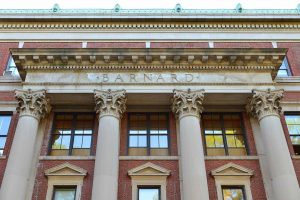Amanda Bernocco
Copy Editor
The U.S. News and World Report ranking out of 51 master’s degree programs in library and information studies in the U.S. that are accredited by the American Library Association ranked LIU Post’s Palmer School of Library and Information Science 39.
Library Science is a program of study where students learn to catalogue, preserve and collect books and other documents.
Geraldine Kopczynski, academic advisor for Palmer, said that although it’s not the greatest ranking she is happy to be on the list. She added that the school hasn’t made the list in at least 15 years.
Caitlyn Wrigley, who studies Library Science at Palmer, stated that she is thrilled that her program has been recognized as one of the top in the nation. “It’s exciting and it’s a testament to the hard work of those who spend so much time to make it so wonderful; our administrators, and our faculty have a very strong presence within the profession,” Wrigley said. “They both put their every effort into providing amazing opportunities for students to learn as much as possible and to develop the skills that will be necessary to be able to thrive in a job atmosphere that is rapidly evolving,” she added.
According to Kopczynski, the Palmer school stands out because of the various programs it offers, and how they offer them. “We have three different campuses; we rent space over at NYU, we’re over here [at Post] and we’re in Brentwood,” Kopczynski said. “We understand our student body—we try to connect with them and interact with them. We try to look around and see what our students need and we constantly review our curriculum,” she added.
One concentration within the curriculum is Rare Books and Special Librarianship; through the program students learn about rare books, how to identify the books, catalogue them, their history and how to preserve the books. Students in this program learn everything about rare books through electives that they choose to take.
Wrigley, who got her undergraduate degree from Manhattanville College in English Literature and American History, chose the Palmer School because of the opportunities the school provides for internship experiences in New York City. She also chose this school because the professors teaching the program have expertise in various fields of the library science profession.
“The Palmer School offers incredible support for professional development and advancement. The relationships they have forged with libraries, museums, historical societies, and other information institutions have provided students with amazing internship opportunities and most importantly a career path after graduation,” Wrigley added.
Kopczynski said that many students, and professionals, refuse to use the “L-word” [library]. “Some students don’t even consider themselves librarians; they consider themselves information brokers. I prefer the title information diva, but that’s just me.”
Students enrolled in the library science program are gaining the experience to be “information brokers.” There are many jobs that require a library science degree besides your typical public or school librarian. Some of these jobs include school media specialists, rare book and special collections specialists who work as archivists, law librarians and corporate librarians.
“You’re not strictly a librarian, you’re an information professional; and that has changed over the course of the last 10 years. Information professionals are used in all industries and in all different types of businesses as well as in education. Our programs prepare you to be an information professional,” said Heather Ranieri, director of marketing and recruitment of the Palmer School.
Ranieri added that a former student is doing archival work sorting old comics between the 1920s and the 1940s, while another former student is cataloging vintage jewelry in Manhattan with her degree. “There are so many different options with the degree,” Ranieri said.
Kopczynski, who is a Palmer school graduate herself, has noticed several changes within the program since she attended in 2000 besides the addition of technology. She recalls a core course in her curriculum called Technology for Information Management and said that her first assignment was to email the professor. The class doesn’t exist anymore because students are entering the program with experience using technology.
“The student body has gotten younger. When I first started it was mostly women coming back to school and they wanted to change their profession. They had their kids, their little ones were maybe four or five, and they wanted to go back to school to do something that they liked, Kopczynski said. “They wanted something that worked better for the family life. Now I’m seeing much younger students. I also see more diversity with men, women, and ethnicities; so that’s good,” she added.






Be First to Comment